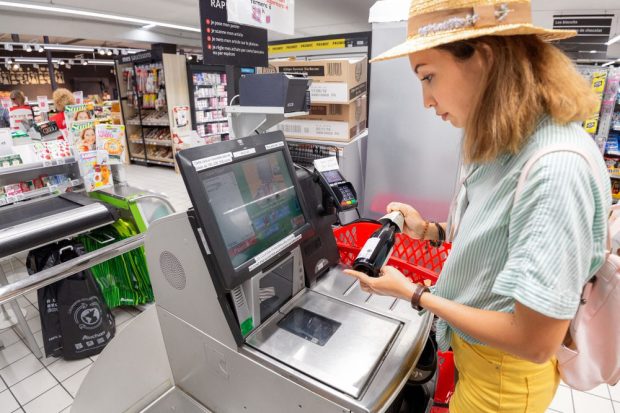Standard AI Adds Google Tools to Speed Checkout

Standard AI said it’s using Google Cloud’s artificial intelligence (AI) tools to improve checkout.
The autonomous retail technology company announced Wednesday (Aug. 23) it was integrating Google Cloud into its checkout offering, and getting access to Google Cloud’s Vertex AI tools.
According to the release, Vertex’s machine learning and generative AI capabilities can iterate and refine deep learning models quickly, and in turn, serve core operations quicker and with increased accuracy.
“Retailers today are mired in increasing labor and inflation challenges. Many are unable to evolve to meet new customer demands or grow brick-and-mortar stores as they strive to maintain the highest levels of customer service,” the release said.
“These retailers have embraced self-checkout and other AI-powered solutions as a way to manage labor and inflation woes, understand and manage loss, optimize out-of-stock and inventory challenges, and reach new shoppers with exciting new offerings and experiences,” the release added.
Aside from deploying Vertex AI, Standard AI said it is getting access to Google Cloud’s generative AI, point-of-sale capable (PoS) assisted, and large language model (LLM) capabilities, which it will use it to support its autonomous checkout solution and Skip, its branded self-checkout solution.
“We’re on the cusp of an AI-powered revolution in retail, driven by the need to manage labor and inflation challenges while meeting the needs of new tech-enabled shoppers,” said Jordan Fisher, CEO of Standard AI.
The company acquired Skip earlier this year, saying it lets Standard AI communicate information about its computer vision payment options on the screens of more traditional self-checkout kiosks, gradually introducing shoppers to the technology.
Speaking to PYMNTS soon after the acquisition, Fisher argued that changing shopper behavior requires a gradual approach.
“When we rolled out shopping carts 60, 70, 80 years ago — it seems weird to think about, but before that, shoppers didn’t know how to use shopping carts, and grocers started putting them into their stores, and shoppers weren’t using them,” Fisher said. “What they ended up doing was, they started hiring actors to walk around the store with the shopping carts because it made it really clear to all the other shoppers that that’s what these are for.”
And while just 38% of U.S. grocery lanes are self-checkout, PYMNTS wrote earlier this week that there is a rising recognition among grocers of a need to offer a broad range of technologies to create a personalized, self-service environment in stores.
Research by PYMNTS and ACI Worldwide found that more than 60% of grocers said consumers might take their business elsewhere if they did not offer self-service kiosks, while almost 80% said the same about barcode and scanner apps.
